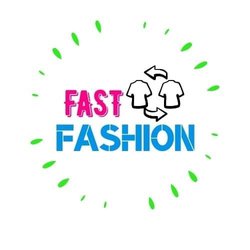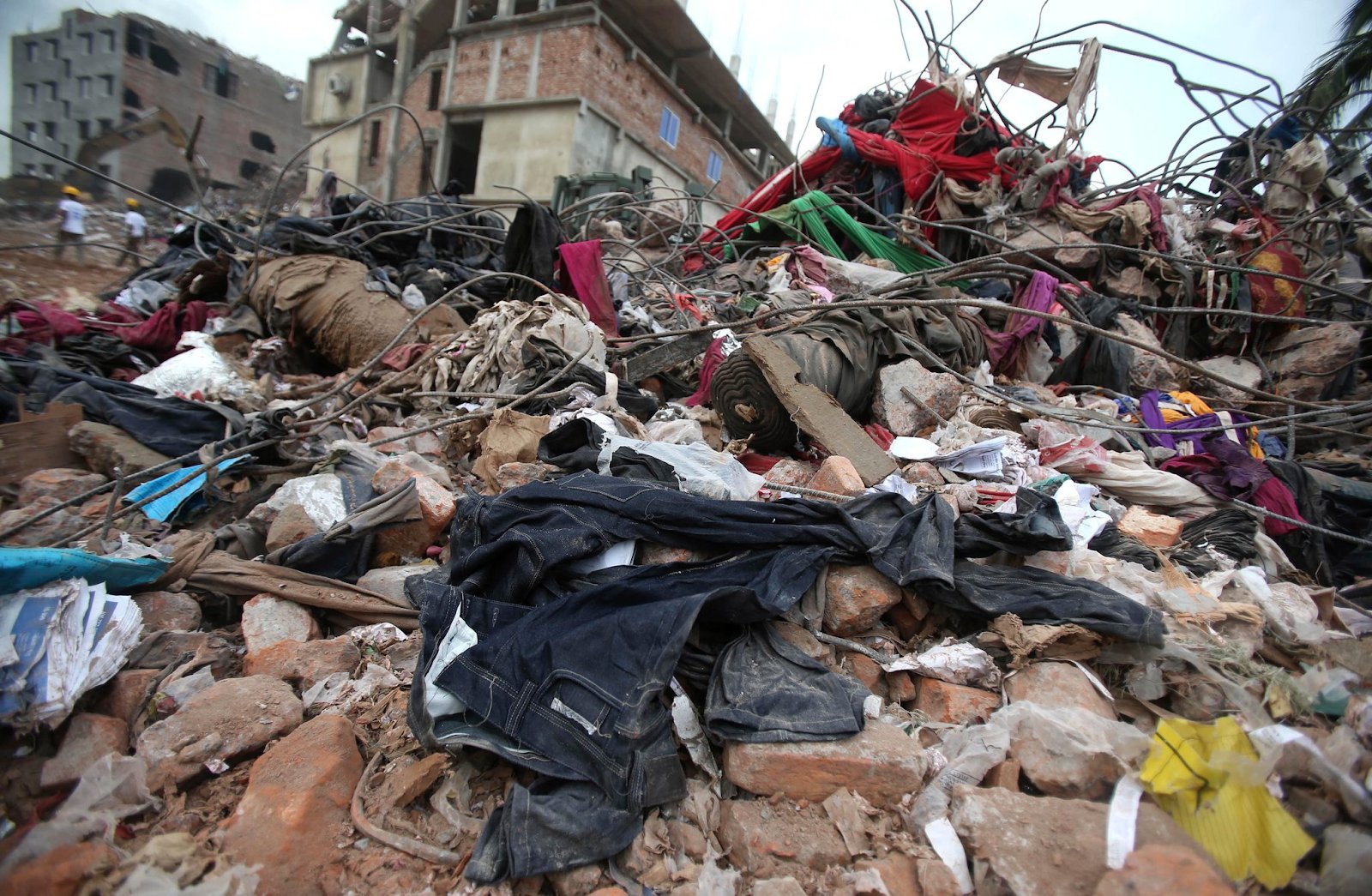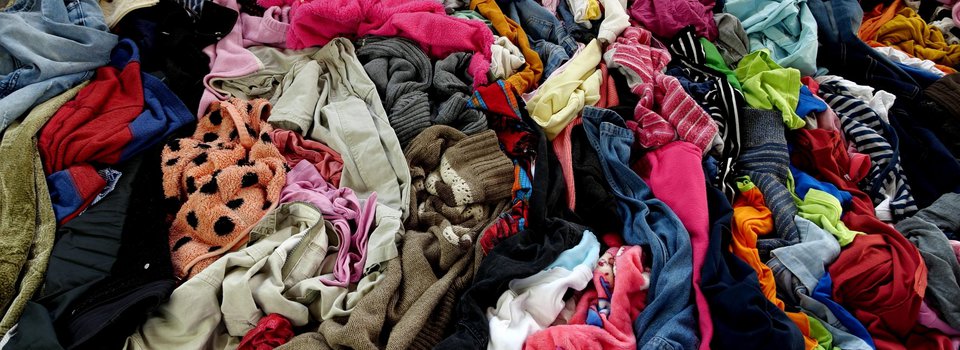What is Fast Fashion?

Fast fashion is a term used to describe clothing collections designed to be released quickly and cheaply to respond to the latest trends. This often means that fast fashion garments are lower in quality and may need to be more sustainable. Winter is particularly appropriate for fast fashion as people usually dress in warmer clothing (Buzzo & Abreu, 2019). This means fast fashion retailers will likely focus their collections on warm layers, sweaters, and coats. They may also release collections of boots, hats, and gloves to keep customers warm throughout the winter season. In Edmonton, this is especially evident in the winter, with new fashion catalogs and advertisements. While fast fashion can be a convenient way to get a new wardrobe quickly, it is often low in quality and often disregards the aspect of sustainability.
Seasonal Effects on Fast Fashion

We often reach for the same old sweaters and jeans when the weather gets colder. But with a new season comes the opportunity to mix things up and try something different. Unfortunately, sometimes the temptation to stick to our regular wardrobe is weak, and we fall into the traps of fast fashion. Fast fashion is clothing typically bought in bulk and often has a shorter lifespan than custom-made clothing. It’s easy to become addicted to this shopping type because it’s convenient and affordable. When the temperatures drop and the snow starts to fall, we all begin to think about our winter wardrobes. We want to be stylish, but we also want to be comfortable and warm. This is where fast fashion comes in. This type of clothing can be found in most stores, especially in winter. From large jackets to new snow boots, these items are usually similar to the ones already present in our wardrobes. But with the temptation of the newer style, we often find ourselves shopping again. When shopping for fast fashion, it is essential to be aware of the quality. This type of clothing is often made from low-quality materials that not only can quickly wear out, but leave an everlasting impact on the environment.

It is essential to be aware of the environmental impact of fast fashion. These clothes are often made from synthetic materials that can create pollution and waste. When shopping for clothes this winter, it is essential to be aware of the quality of the clothing, its environmental impact, and how quickly it will wear. By being aware of these factors, we can choose to purchase more sustainable clothes without having to compromise our comfort in the winter.
Buying Smart and Fast Fashion
When we go shopping, it’s hard to avoid checking out the new “trend” and what is “hot” in the fashion industry. However, it’s even more important to consider the durability of the clothing, its environmental footprint, and its quality to ensure you are getting the best item, and to avoid coming back to the store in a few months’ time to find a replacement. Some ways to avoid indulging in fast fashion are to look for brands that are environmentally friendly and avoid greenwashing brands. Similarly, the internet is a great tool to discover brands that specialize in fast fashion, as well as to compare the quality of clothing between brands to ensure that the clothes you purchase are the best option for you and the environment.
Greenwashing & Eco-friendly Brands

It is no secret that the fashion industry is one of the most polluting industries in the world. The problem has only gotten worse in recent years, as the demand for cheap, trendy clothing has driven the industry to churn out more and more clothing products. This rampant consumerism has led to several environmental problems and increased toxic waste. Sadly, the problem is only going to get worse. People start to think about their winter wardrobe as the weather gets colder and snow begins to fall. Although many people want to stay fashionable, they also want to be eco-friendly. Brands are aware of this, and take advantage of it through their marketing strategies, often known as “greenwashing.”
Greenwashing is making a product or service appear more environmentally friendly than it is, and capitalizing on consumers’ values. These brands are typically the major brands, such as Nike, Adidas, and American Eagle Outfitters. However, there are genuine, eco-friendly brands out there that make great winter wardrobe choices. Additionally, there are fast fashion brands that make a conscious effort to be more eco-friendly. Examples of these brands during the winter season include Zara, H&M, and Uniqlo. All these brands follow the trend in terms of catalogs and the newest release, and therefore follow a fast fashion model. In contrast to major brands that tend to omit sustainability, these eco-friendly fast fashion brands are a better alternative as they are affordable, eco-friendly to a certain extent, and stylish. Specifically, their clothes are made of natural materials and are environmentally friendly (Kim & Oh, 2020).
A misconception is that sustainable clothing is not fashionable, however, the reality is that these eco-friendly brands have a wide range of clothing options, so you can always find something to fit your style. Lastly, a great way to shop with sustainability in mind is by shopping in second-hand stores, such as thrift shops. These stores are often a great option in shopping as they always have a variety of discounted items in stock, as well as contribute towards shopping sustainably.
In Conclusion
To conclude, it is important for us to keep in mind the effects of fast fashion when we go out shopping in preparation for the winter. It can take a few minutes to just search the brands, their effects on the environment, and their sustainability policy. We have all the resources available to us to make smarter choices when shopping, and it is important for us to educate ourselves and others about fast fashion and its negative effects on the environment, and start thinking about how to encourage sustainable fashion than fast fashion.
Written by Woojin Houser
References
Buzzo, A., & Abreu, M. J. (2019). Fast fashion, fashion brands & sustainable consumption. In Fast fashion, fashion brands and sustainable consumption (pp. 1-17). Springer, Singapore.
Kim, Y., & Oh, K. W. (2020). Which consumer associations can build a sustainable fashion brand image? Evidence from fast fashion brands. Sustainability, 12(5), 1703.


